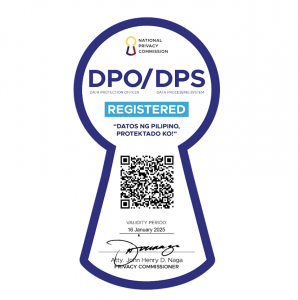History
A young man, barely 23 years old, had a vision of inculcating among the youth the qualities of competence and leadership, high moral and spiritual values and development of each individual into a total person. These would be acquired through an educational process guided by the philosophy of Dynamic Filipinism.
This philosophy has as its guiding tenets, the internalizing all that is good in the Filipino people: warmth, hospitality , innovativeness , and a high emotional quotient that has made Filipinos renowned in service oriented industries.”
This young man , Don Mariano Fortunato Jhocson , guided by this vision , founded Colegio Filipino , now NATIONAL UNIVERSITY in August 01 , 1900 , in Quiapo, City of Manila . It was the first non – sectarian and co – educational institution then. There were only a handful of students at that time in the fledgling School, and they were in the elementary and secondary (High School) levels. Don Mariano, in order to help the school grow, was teacher, director and janitor rolled into one.
In a short span of 5 years, he offered courses in Business – bookkeeping and accounting, convinced that thus armed, his students would be financially secure and respectable after graduation. This led to the changing of the name to Colegio Mercantil , awarding the diploma of Perito Mercantil . A short time later, the Philippine Law School was opened with the collaboration of the Lacson brothers. Don Mariano saw the dire need for training the youth for leadership and responsibility. He firmly believed that the discipline of Law would turn out men and women who would eventually be advocates for Philippine self government.
In 1916, the Board of Trustees changed the name from Colegio Mercantil to National Academy. The growth of the Academy was continuous, added Liberal Arts which became the gateway to other disciplines that followed.
After 21 years of educational service, on January 17, 1921, the Board of Trustees applied for and secured permission from the Department of Public Instruction to change the name of the National Academy to NATIONAL UNIVERSITY. On that same day, the University also installed Senator Camilo Osias , one of the most respected and outstanding Filipino educators as President of the University.
Thereafter, the Colleges of Education and Commerce were opened in the same year. During the following years, the Colleges of Pharmacy and Dentistry were opened in 1922. The College of Engineering, offering initially Civil Engineering opened in 1925 and the Normal School in 1930. Sanitary Engineering was initially offered in 1930.
From July, 1945 its facilities have since continuously expanded and the following disciplines were added – Bachelor degrees in Chemical, Electrical, Industrial, Mechanical Engineering and Architecture and Arts. Master in Sanitery Engineering was also organized.
Responding to the needs of industry and modern technology, the University started offering the following courses: Computer Science in 1990, Marine Engineering and in 1994 Computer Engineering and Electronics and Communications Engineering. College of Nursing was offered in 2004, Hotel and Restaurant Management in 2008 and Information Technology in 2009.
On January 01, 1998, a disastrous fire razed four buildings of the University – the Main Building, Law and Commerce Building, Elementary Building and the Graduate School Building. The University was able to re-open its doors after three weeks of unrelenting restoration work.
In the last quarter of year 2008, the SM Group of Companies acquired majority ownership of the National University. The all out support of the SM Group will help strengthen our institution as Higher Institution with new infrastructure, improved and upgraded laboratory, focused in academic excellence.
Today, the University is engaged in a continuous modernization and upgrading program for its facilities, faculty and sports development.Our new University infrastructure is an 8 storey modern design building with two units of escalators and four units of elevators.
NATIONAL UNIVERSITY is a founding member of the University Athletic Association of the Philippines (UAAP) and is a pioneer of the Philippine Association of Colleges and Universities (PACU). Its international affiliations and memberships include the Association of Southeast Asia Higher Institutions of Learning (ASAHIL) and the International Association of Universities (IAU).
